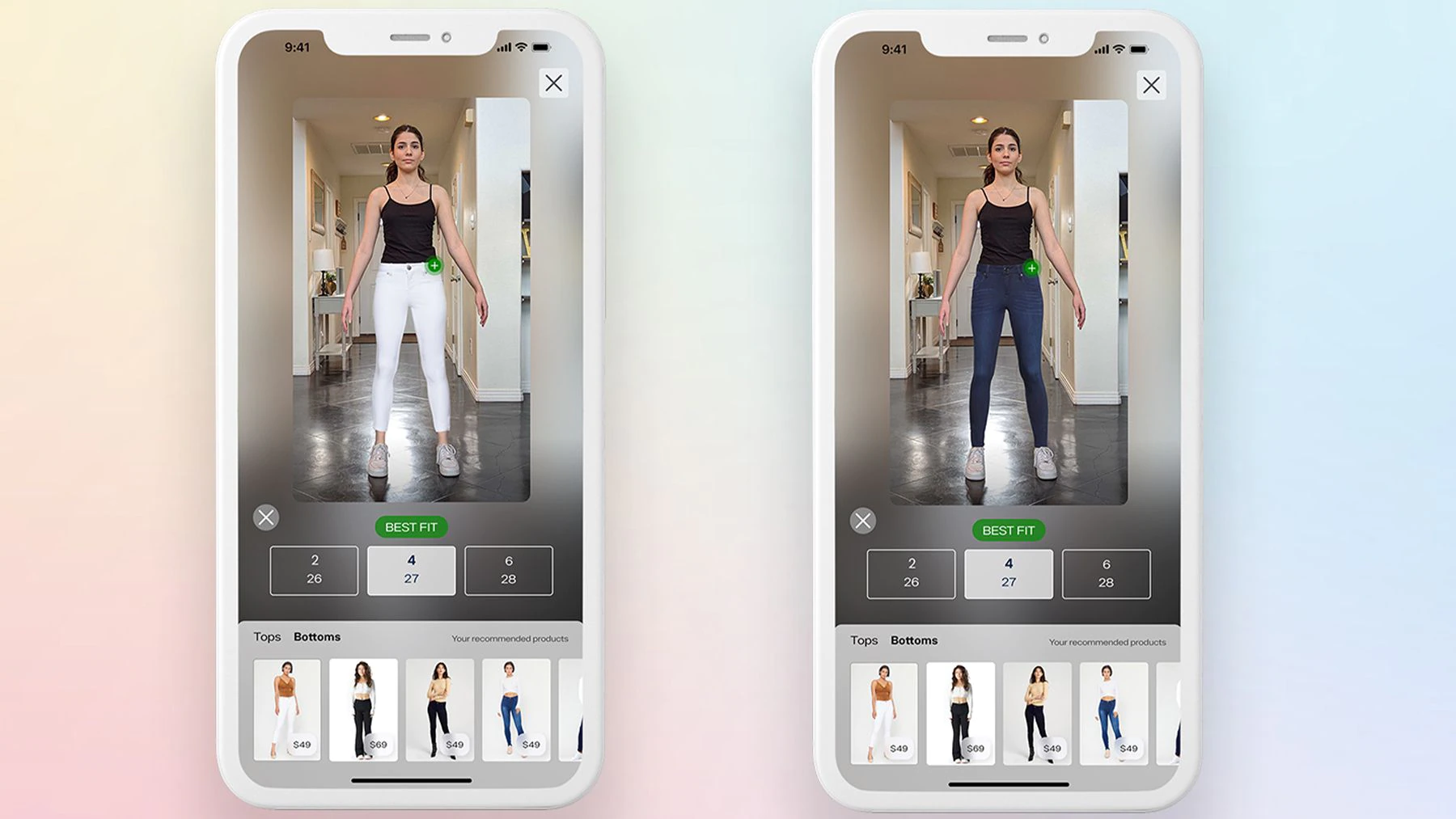
The start-up, which uses AI to scan users’ bodies and create personalised digital avatars to try-on clothes in, is launching “YourFit 2.0,” a Shopify and Shopify Plus plug-in that automates the process of creating virtual fitting rooms. With the new tool, brands will be able to choose the products they want to feature, input fit data, and can launch a fitting room in under a week — where it used to take up to six months. It will also introduce a product recommendation feature that picks items for shoppers based on body shape, fit preference and inventory levels, and, later this year, an app for store associates.
Virtual fitting rooms have long been touted as a solution for e-commerce’s low conversion rates and high returns, but have largely failed to gain meaningful traction because of a bevy of barriers, including high cost of implementing, and low adoption rates, sluggish consumer technology, difficulty in rendering garments digitally, and the subjective nature of fit. 3DLook’s new product is designed to reduce the amount of time it takes for a brand to get a virtual fitting room up and running — ideally, making it easier for a wider range of brands to implement the technology.
3DLook built its tool for Shopify and Shopify Plus because that’s where it thinks it can find like-minded brands.
“We very purposely built first for Shopify and Shopify Plus, understanding that there is a huge market of companies that have similar missions that are focused on sustainability,” said Whitney Cathcart, co-founder and chief strategy officer of 3DLook. “These companies are going to be tomorrow’s $500 million brands.”
3DLook is already working with Date of Birth (D.O.B.), an online retail platform for brands that forefront sustainability and inclusion.
“[Virtual try-on] is one of the big things that’s been missing in our industry. It’s one of the big reasons why people still feel compelled to go into stores to try-on products physically,” said Noah Treshnell, D.O.B. co-founder.
Treshnell said D.O.B. can onboard new brands in 24 hours, so he wants to work with technology partners that can work quickly as well. The tool’s automated process makes it easier for companies like D.O.B. to continue to add new merchandise and brands into the virtual fitting room — it just has to input some fit data rather than starting the process, which used to take months, from scratch.
While the technology may be improving, Katie Thomas, Kearney Consumer Institute lead, told BoF in February, changing consumer habits is the difficult part. To make virtual fitting rooms successful, retailers and start-ups need to focus on making solutions exciting for consumers, rather than just using 3D tech as a way to improve margins.
3DLook sees opportunities to make consumer experience better ahead. Brands will know what their consumers look like, and be able to create products targeted to them more precisely. Cathcart dubs that a sustainability play. And, she says, down the line size won’t just be about fitting into a number or letter — but will be personalised to each person.
“To me 3DLook has always been not just about consumer experience, but what are we doing with data? And how can we innovate in the way we think about creating products and how we’re sizing products?” said Cathcart.



